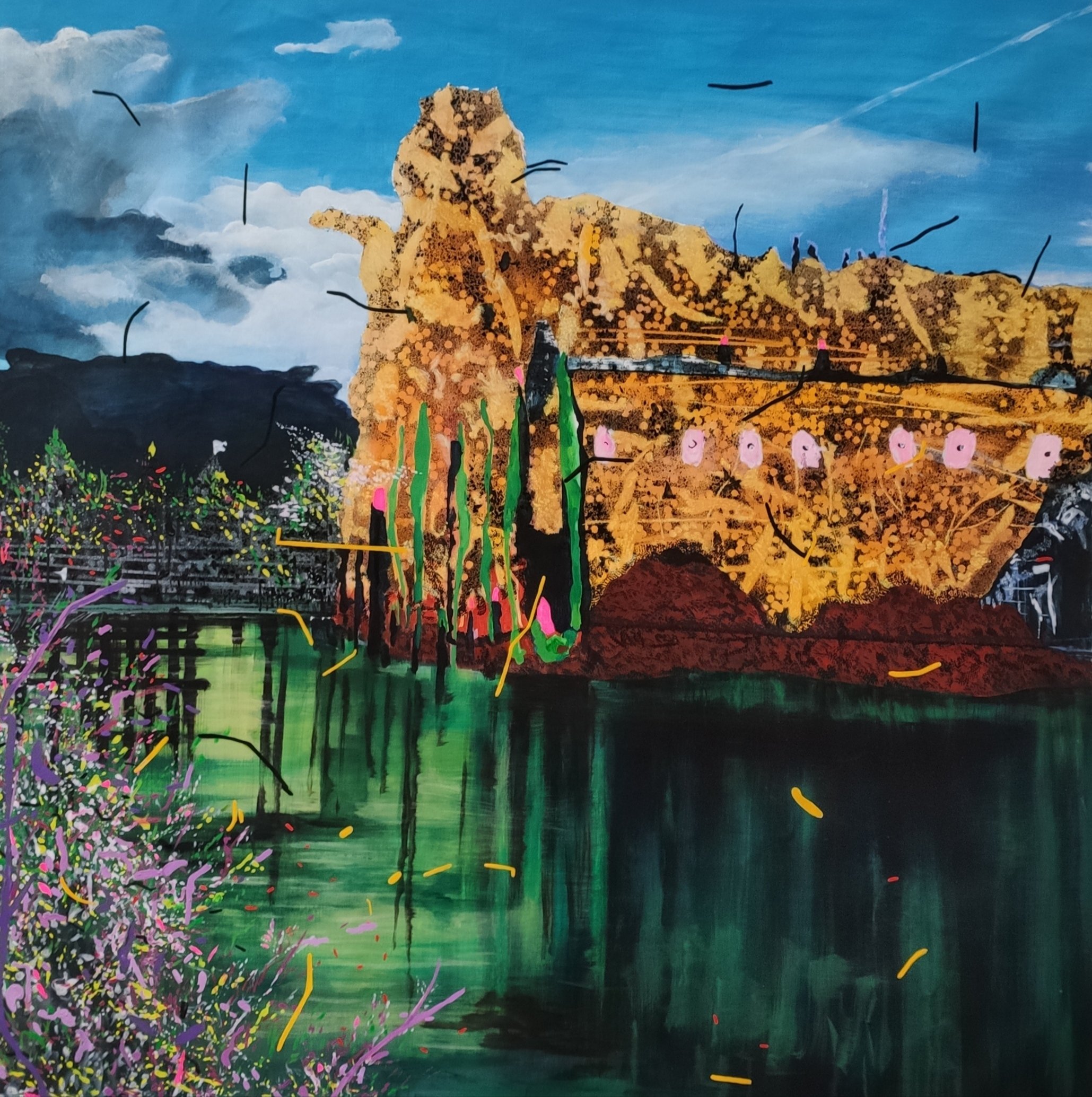Sasha Lopatich
Sasha Lopatich (Aleksandra Lopatić b.1971, Sarajevo) is a Bosnian-French artist based in Paris. She graduated from the Sarajevo School of Applied Arts in 1989 and from the Department of Printmaking at the Academy of Fine Arts in Novi Sad (Serbia) in 1996. Her work has been shown in numerous exhibitions in Europe and China. Several of Lopatich's works are part of the permanent collection of the Ningbo Museum of Art in China.
Could you tell us more about your background and how you begin creating art?
Today I live in France which has become my adopted country, but I was born and raised in Sarajevo, Yugoslavia. Country that was imagined as a poor man's paradise, open to multiples cultural influences but authoritarian for much of the rest. Already as a child, I felt like a misfit captured in a jar. I could see the outside world but my wings were too small to break the glass.To complicate matters further, my family, originally from the mountains surrounding the city and attached to tribal traditions, had little interest in the contemporary culture that was joyfully flourishing all around us. The most part of my childhood I spent hidden between the foliage of the trees, devouring youth literature from around the world. Tom Sawyer and Huckleberry Finn, whom I met in my local library, inspired my early existence more than anyone else. Thus, my subsequent art was rooted from the start in a crossroads of multiple responses. I also shared a dream with my whole generation of becoming an astronaut. Other perspectives seemed hard to imagine, but since I was bad at maths and physics, my exploration of the universe began simply by drawing it. With revolt and the refusal of authority as background music.
What does your art aim to say to its viewers?
My aim is to offer a reading that is both contemplative and narrative, whether approached from a micro or macro perspective. I am looking for hidden passages, emergency exits, an exploration beyond time, a space between two lines. Divination rather than autopsy of reality. Viewers are guided to finally lose themselves in a place that abhors a vacuum. Sometimes while chasing butterflies a Minotaur can be found. Sometimes nothing so frightening as a peaceful, blue sky.Like most artists, I channel my emotions by giving them a higher purpose and a visible form. It is an intimate relationship between a pictorial process and a silent monolog from which the alchemy of painting arise.
Can you tell us about the process of creating your work?
What is your daily routine when working? After graduating in engraving, I quickly abandoned this discipline as too restrictive for multicoloured creations, but I have always drawn from this source to seek new textures and materials. For a long time I explored mixed media on paper using collage and monotype to draw the complex compositions that imitated painting. But since 2020 I've been giving all space to acrylic. With this plastic material, therefore immortal, I am currently translating on canvas all my dictionary of techniques found during my previous periods. Generally, I first prepare a sketch using various manual and digital processes. For this series of landscapes, which is in progress, the inspiration does not come directly from nature but from vintage books, printed in heliography and rediscovered among dust and mould during my wanderings in pandemic Paris. These images bear witness to a bygone era in lands unknown to me. It is an exploration of the notion of time, born initially in the impossibility of movement. I work one piece at a time in complete immersion. I move around the studio a lot between the easel, the table and the trestles because I am constantly displacing the canvas vertically and horizontally. I listen to the radio very often, the broadcasts on scientific often incomprehensible subjects help me strangely, enhance my concentration. It's because I got used to hearing people talk around me since I had always shared my studios with other artists.
What is the essential element in your art?
I express myself through series of work that address various subjects and ways of approaching them, but what remains common to the body of work, I think, is the use of collage. In both the literal and figurative meaning. This collage represents a condition that inhabits many immigrants: being cut up, uprooted and then resettled in a new territory. A misfit in a crystal jar.
In your opinion, what role does the artist have in society?
This is a very big question. If we take the painters, concretely, it depends largely on the values of the given society. In some of them, the answer is: none. In a democratic society where artists enjoy perfect conditions such as freedom of expression, a network of supporting institutions and a widely educated public, the role of the artist, it seems to me, is to be either a healer or a jester. Either you are the one concocting the magic potions for the tired knights of capitalism, or you are the one shouting loudly a painful truth with no real influence on the king and the court. The important is to keep playing.










